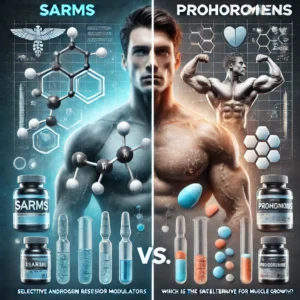SUPPORT Canadian ! Buy steroids , peptides and sarms in Canada | We ship from Canada to Canadians only | No duty - No customs - No cross borders - No risk
SUPPORT Canadian ! Buy steroids , peptides and sarms in Canada | We ship from Canada to Canadians only | No duty - No customs - No cross borders - No risk
- Injectables
- Oral Steroids
- Steroid Stacks – Bulking / Cutting
- Anti Aging
- Acne & Hair Loss
- Anti-Anxiety & Anti-Depressants
- Blood Preasure & Cholesterol
- Diuretic
- Estrogren & Prolactin
- Muscle Relaxers & Anti-Inflammatories
- Sleep Assistance
- THC
- SARMs
- Anti-Biotics/Misc
- PCT / HCG / HMG – Post Cycle Therapy
- Premium Peptides To Buy Online
- TRT
- Sexual Aids
- Weight Loss FAT BURNERS
- Pfizer Genotropin HGH 36IU
- Ozempic Pens
- Nootropics / Smart drugs
- Human Growth Hormone HGH
- Syringes/Needles and Bacterial Water
- Liver Support & Acid Reflux
- Nicotine Pouches
Anastrozole: A New Way to Prevent and Treat Breast Cancer
CS Depot
The last thing that you want to hear as a woman is that you have developed breast cancer. Finding a lump is one of the most eye-opening moments you can have, and for many women, it is at that moment that we feel we are at our weakest. This cancerous being is taking over, and we don’t know how to stop it.
One in eight women will develop breast cancer in their lifetime. In the United States alone, it is estimated that a whopping 310,720 will be diagnosed with invasive breast cancer in 2024, with an estimated 42,250 of those women not making it.
Through the first half of the decade, both Caucasian and African American women saw the highest incidence of breast cancer as well as the highest mortality rate, with Native American women, Latin American women, and Asian American women following behind. For many women, prevention and treatment are the only options they have, especially if breast cancer is already prevalent in their families. But Anastrozole can help.
What is Anastrozole?
In 1987, Imperial Chemical Industries, a British chemical company, patented Anastrozole. It became part of the FDA-approved list in 1995 as a treatment option for those who have breast cancer. Anastrozole has several associated names; some include Anastrozole, ICI-D1033, and ZD-1033, along with its branded names Arimidex and Aremed.
Breast Cancer Treatment Option
As mentioned above, Anastrozole is primarily used to treat breast cancer, specifically hormone receptor-positive breast cancer. Hormone receptor-positive breast cancer is a tumour of cells expressing receptors for specific hormones. The most common example is estrogen receptor-positive tumours; however, it can also include progesterone-receptive-positive tumours.
Prevention of Breast Cancer
Its treatment abilities don’t stop there. It has also been used as a preventative measure to prevent breast cancer for individuals who are at a higher risk. This includes individuals who are at an increased age as well as those who share the same genetic makeup as someone who has had breast cancer. Inherited gene mutations that occur in certain genes like the BRCA1 and BRCA2 are typical indicators that breast cancer is a possibility. However, with the possibility of prevention by using Anastrozole, there is less to worry about for these specific individuals. Another thing to keep in mind about this research chemical is that it is taken orally as another alternative currently doesn’t exist.
In a study that took place over several years and recruited 3,864 women who were postmenopausal and at risk for developing breast cancer, the effectiveness of Anastrozole as a preventative measure in breast cancer development was measured. The women were randomly recruited between 2003 and 2012. Once the recruitment period finished, 1,944 women were given Anastrozole at a 1mg per day dose for five years. The other 1,920 women who participated in the study were assigned to the placebo group. After the five years of taking Anastrozole had been completed, these women were followed up with at around the 131-month mark. What researchers found was that in those who took Anastrozole for five years at 1mg a day, there was a 49% decrease in breast cancer than those who received the placebo.
Treatment for Peripheral Precocious Puberty
Aside from aiding on the breast cancer front as a treatment option for those at a higher risk of developing breast cancer in addition to those who have hormone receptor-positive breast cancer, Anastrozole has also been found to aid in the treatment of those who experience peripheral precocious puberty. This occurs when an individual starts puberty at an age earlier than they are typically supposed to, which can be linked to familial male-limited precocious puberty, which is also known as Testotoxicosis, as well as McCune-Albright Syndrome.
Side Effects of Anastrozole
The upside to taking Anastrozole as an option for breast cancer treatment and prevention is that there are no known drug interactions that occur with it. However, like most things, there is always the possibility of negatives. The good thing is that these negatives are fairly mild compared to what this research chemical does to benefit you. Some of the more common side effects include hot flashes, weakness, arthritis, high blood pressure, depression, nausea or vomiting, insomnia, and headaches. In Extremely rare cases, side effects include things like swelling of the face, lips, and tongue, as well as difficulty swallowing. This usually only occurs when someone is allergic to Anastrozole, which is extremely rare.
- hot flashes
- weakness
- arthritis
- high blood pressure
- depression
- nausea or vomiting
- insomnia
- headaches
Don’t let breast cancer sideline you from the life you worked hard for and deserve. You may be one of those 276,480 women diagnosed in 2020, but don’t let it defeat you. Stand tall and know that you are supported. Take charge and work to become one of the many in the statistics of survivors so that your legacy can live on with those around you. Fight back with Anastrozole and take control of your future.
Buy Anastrozole 1mg Tablets Online from Canada Steroid Depot.
There are many places on the World Wide Web where you can buy Anastrozole. However, only some of these places are the most reliable, and when you purchase research chemicals, you want to get the best. That is where Canada Steroid Depot comes into play. At Canada Steroid Depot, all products are tested to a high standard to ensure our customers’ safety. Have questions? Why not ask our customer service team? Want to learn more about Steroids, peptides, SARMs, and research chemicals? The blog page has the most up-to-date information on everything from getting ripped to knowing what peptides help with anti-aging and muscle growth.



